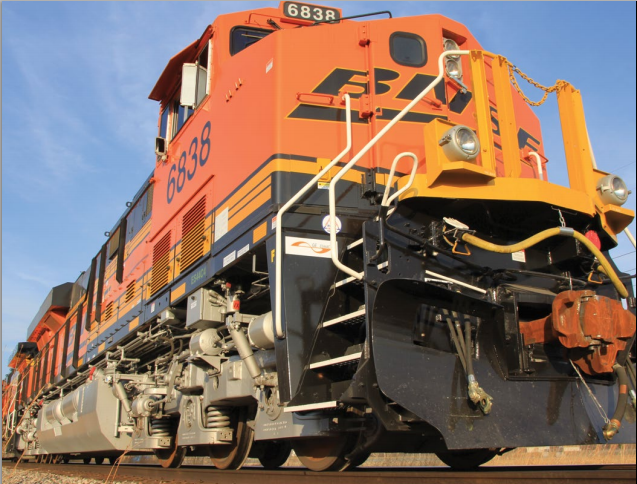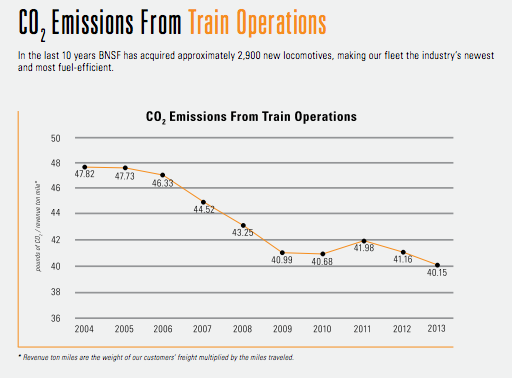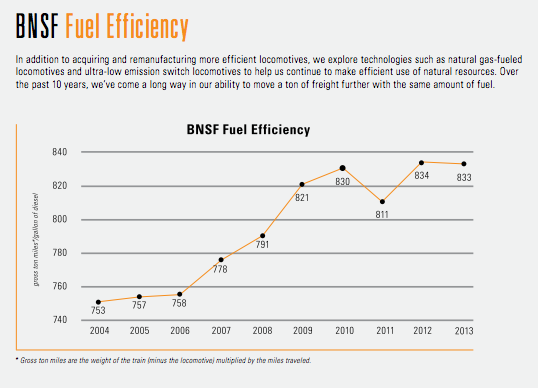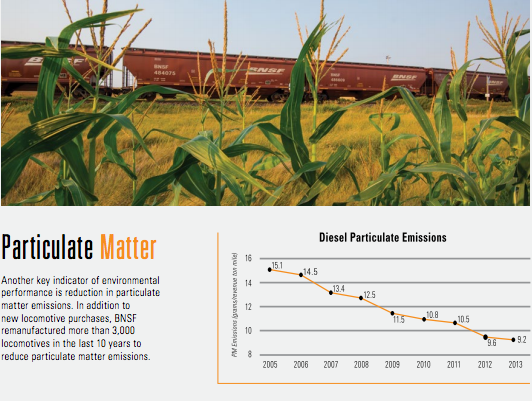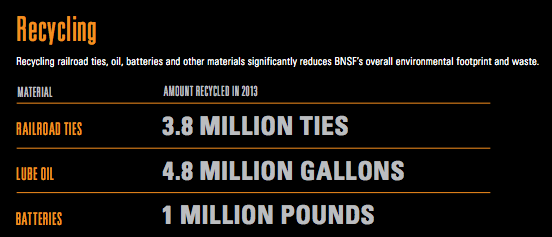Building on the Environmental Advantage of Rail
Locomotives
Reducing carbon emissions in our business is largely about locomotive and operational efficiency. Because locomotives have a life span of 30+ years, BNSF continuously looks at our entire fleet of locomotives, retrofitting and remanufacturing them as needed to be more fuel-efficient and cleaner-burning.
Today, approximately 90 percent of BNSF’s fleet uses idle-control technology to automatically shut down locomotives not in use. BNSF has 90 ultra-low-emission locomotives used in switching operations that reduce nitrogen oxide and particulate matter emissions by 80 to 90 percent and improve fuel efficiency by 25 percent compared with standard switch engines. BNSF is also aggressively investing in fuel-efficiency technology, including driver-assist systems, rail lubrication and proper horsepower distribution.
Customer Carbon Reduction
Over the past five years, BNSF has provided customers with individualized reports of their total rail carbon footprint. In 2013, our analysis showed that customers reduced their total carbon output by more than 30 million metric tons by shipping on our railway rather than the highway. Customer carbon reductions afforded by rail efficiency on a yearly basis are equivalent to…
- Removing the resultant emissions of 6 million vehicles [1]
- Saving the energy used by 1.5 million Homes [1]
Truck Conversion to Intermodal
While trucks perform local pickup and delivery well, BNSF can move large numbers of truck containers efficiently for the long haul. The result of combining the strengths of both modes is that many of the nation’s biggest trucking companies have become some of our best customers. Consequently, our customers are realizing carbon emission reductions of 50 to 75 percent for each shipment.
Recycling
Recycling railroad ties, oil, batteries and other materials significantly reduces BNSF’s overall environmental footprint and waste.
Legacy Sites
BNSF is meeting the challenge of addressing environmental impacts at legacy sites where rail operations have been conducted for a century or more. In the past five years, BNSF has invested more than $315 million on remediation efforts throughout our network and has completed work and rehabilitated more than 140 sites.

